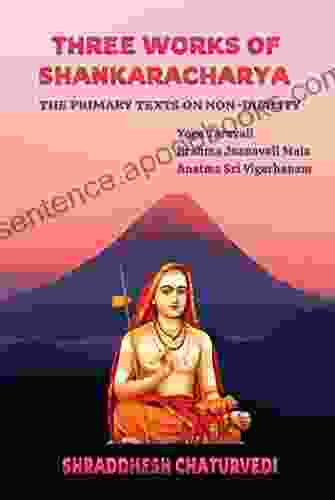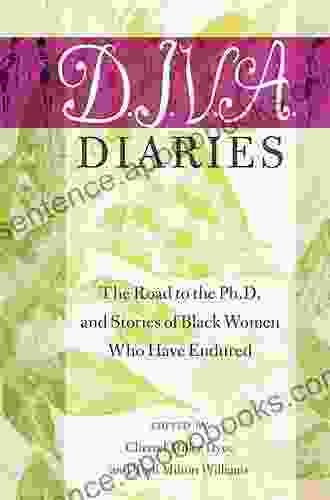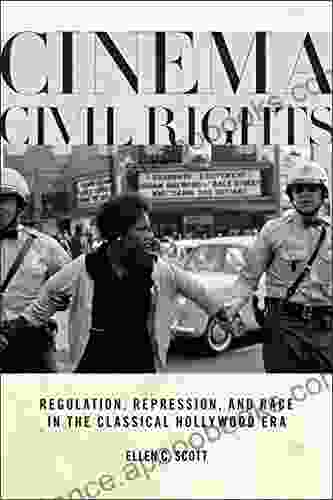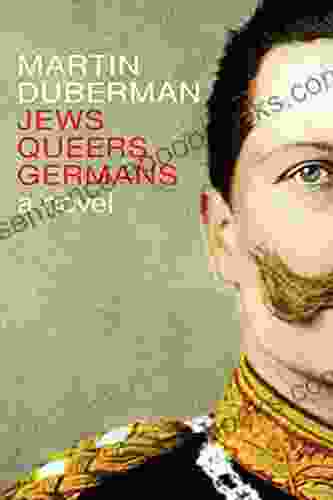Unveiling the Essence of Non-Duality: A Journey through the Primary Texts

Non-duality is an ancient philosophical perspective that challenges the fundamental distinction between the self and the world, the observer and the observed. It proposes that all of reality is interconnected and unified, without any inherent divisions or separations. This profound concept has been explored by various spiritual and philosophical traditions throughout history, giving rise to a rich body of primary texts that offer invaluable insights into the nature of non-duality.
In this article, we will embark on a journey through some of the most significant primary texts on non-duality, exploring their teachings, practices, and transformative potential. We will delve into the wisdom of Advaita Vedanta, Buddhism, and Taoism, uncovering the common threads that run through these diverse traditions and offering a glimpse into the profound experience of non-duality.
5 out of 5
| Language | : | English |
| File size | : | 1037 KB |
| Text-to-Speech | : | Enabled |
| Screen Reader | : | Supported |
| Enhanced typesetting | : | Enabled |
| Print length | : | 75 pages |
| Lending | : | Enabled |
1. The Upanishads (Advaita Vedanta)
The Upanishads are ancient Sanskrit texts that form the core of Advaita Vedanta, a prominent school of non-dualistic philosophy in Hinduism. They contain profound teachings about the nature of reality, the self, and the ultimate goal of spiritual liberation.
One of the most renowned Upanishads is the Brihadaranyaka Upanishad, which proclaims, "Brahman is reality. The world is an illusion. Brahman alone is real." This fundamental principle of Advaita Vedanta asserts that the ultimate reality, Brahman, is non-dual and indivisible. The world of diversity and multiplicity that we perceive is merely a projection of the mind, an illusion that obscures the true nature of reality.
The Upanishads also emphasize the importance of self-inquiry, urging seekers to question their true identity. "Who am I?" and "What is the nature of the self?" are central questions that help dissolve the illusion of a separate self and reveal the underlying unity of all existence.
2. The Lankavatara Sutra (Buddhism)
The Lankavatara Sutra is a Mahayana Buddhist text that offers a comprehensive exposition of non-duality. It teaches that all dualistic distinctions, such as subject and object, self and other, are ultimately false and dissolve into the pure and undifferentiated nature of mind.
The Sutra emphasizes the concept of "mind-only," proposing that reality is fundamentally mental in nature. All perceptions, thoughts, and emotions arise from the mind, and there is no objective world independent of our own consciousness. This realization leads to the understanding that the distinction between the self and the world is an illusion created by the mind.
The Lankavatara Sutra also highlights the importance of meditation practices, such as mindfulness and insight meditation, as a means to penetrate the illusion of duality and experience the true nature of reality.
3. The Tao Te Ching (Taoism)
The Tao Te Ching, attributed to the ancient Chinese sage Lao Tzu, is a classic text of Taoist philosophy that expounds on the principles of non-duality. It teaches the interconnectedness of all things and emphasizes the importance of living in harmony with the natural flow of the universe.
One of the central teachings of the Tao Te Ching is the concept of "wu wei," or non-action. This does not imply inaction, but rather a state of effortless spontaneity and alignment with the natural Free Download. By letting go of control and attachments, one can move in accordance with the flow of the Tao and experience a profound sense of unity and harmony.
The Tao Te Ching also speaks of the duality of yin and yang, two complementary and opposing forces that are present in all aspects of existence. By understanding the interplay of yin and yang, one can reconcile opposites and find balance and harmony in life.
4. Ashtavakra Gita (Advaita Vedanta)
The Ashtavakra Gita is a profound non-dualistic text attributed to the sage Ashtavakra. It offers a concise and direct exposition of the teachings of Advaita Vedanta, focusing on the nature of the self and the path to liberation.
The Ashtavakra Gita emphasizes the illusoriness of the ego and the world, stating that "there is no world apart from the Self." It urges seekers to turn inward and inquire into the true nature of their own being, which is pure consciousness, free from limitations and duality.
The text also provides practical guidance for breaking free from the cycle of birth and death and attaining the ultimate state of non-duality. It advocates the path of jnana yoga, the yoga of wisdom, which involves self-inquiry, discrimination, and the cultivation of a pure and detached mind.
5. The Bhagavad Gita (Hinduism)
The Bhagavad Gita is a sacred Hindu text that contains the teachings of Lord Krishna to his disciple Arjuna. While not explicitly non-dualistic in its entirety, the Gita does present profound insights into the nature of reality and the interconnectedness of all things.
One of the key teachings of the Gita is the concept of "karma yoga," the path of selfless action. By performing actions without attachment to the fruits of labor, one can transcend the limitations of ego and develop a sense of unity with the divine. This path leads to a state of equanimity, where one remains unmoved by the dualities of life.
The Gita also emphasizes the importance of meditation and devotion as means to connect with the divine and experience the underlying unity of all existence.
Embracing Non-Duality
The primary texts on non-duality offer profound and transformative teachings that can guide us towards the realization of our true nature. By exploring these texts and embracing their wisdom, we can begin to dissolve the illusions of duality, cultivate a deeper understanding of the interconnectedness of all things, and experience the profound peace and liberation that come from realizing our essential unity with the universe.
The journey of non-duality is not always easy, but it is ultimately a path of profound transformation and self-discovery. By following in the footsteps of the great sages and masters who have walked this path before us, we can unlock the potential for a more meaningful, harmonious, and enlightened life.
References
* The Upanishads, translated by Eknath Easwaran * The Lankavatara Sutra, translated by Daisetz Teitaro Suzuki * The Tao Te Ching, translated by Stephen Mitchell * The Ashtavakra Gita, translated by Swami Muktananda * The Bhagavad Gita, translated by Swami Prabhupada
5 out of 5
| Language | : | English |
| File size | : | 1037 KB |
| Text-to-Speech | : | Enabled |
| Screen Reader | : | Supported |
| Enhanced typesetting | : | Enabled |
| Print length | : | 75 pages |
| Lending | : | Enabled |
Do you want to contribute by writing guest posts on this blog?
Please contact us and send us a resume of previous articles that you have written.
 Book
Book Novel
Novel Page
Page Chapter
Chapter Text
Text Story
Story Genre
Genre Reader
Reader Library
Library Paperback
Paperback E-book
E-book Magazine
Magazine Newspaper
Newspaper Paragraph
Paragraph Sentence
Sentence Bookmark
Bookmark Shelf
Shelf Glossary
Glossary Bibliography
Bibliography Foreword
Foreword Preface
Preface Synopsis
Synopsis Annotation
Annotation Footnote
Footnote Manuscript
Manuscript Scroll
Scroll Codex
Codex Tome
Tome Bestseller
Bestseller Classics
Classics Library card
Library card Narrative
Narrative Biography
Biography Autobiography
Autobiography Memoir
Memoir Reference
Reference Encyclopedia
Encyclopedia Michael J Pomante Ii
Michael J Pomante Ii Karen Snyder
Karen Snyder Candis Watts Smith
Candis Watts Smith Elisabeth Elliot
Elisabeth Elliot D M Baker
D M Baker Joy Hakim
Joy Hakim Ella Mills
Ella Mills Emily Cier
Emily Cier Charles C Johnson
Charles C Johnson Ellen C Carillo
Ellen C Carillo Joyce Hemphill
Joyce Hemphill Joe Haward
Joe Haward Clark Norton
Clark Norton Alexander Cooley
Alexander Cooley Gustavo Cerbasi
Gustavo Cerbasi Jarrod Green
Jarrod Green C G Cooper
C G Cooper Ellen Marie Wiseman
Ellen Marie Wiseman John Dinges
John Dinges Robert Wingfield
Robert Wingfield
Light bulbAdvertise smarter! Our strategic ad space ensures maximum exposure. Reserve your spot today!
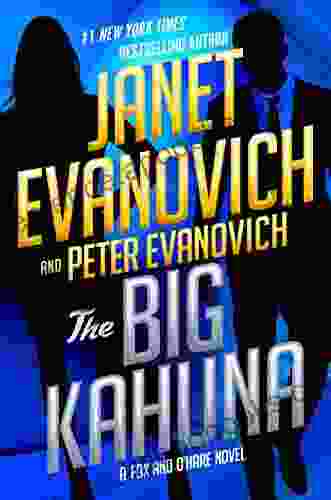
 Kenneth ParkerThe Big Kahuna Fox And Hare: A Children's Book About Friendship and Teamwork
Kenneth ParkerThe Big Kahuna Fox And Hare: A Children's Book About Friendship and Teamwork Andrew BellFollow ·15.6k
Andrew BellFollow ·15.6k Bernard PowellFollow ·14.1k
Bernard PowellFollow ·14.1k Jason HayesFollow ·16.2k
Jason HayesFollow ·16.2k Jaden CoxFollow ·19.5k
Jaden CoxFollow ·19.5k Mikhail BulgakovFollow ·8.9k
Mikhail BulgakovFollow ·8.9k Eliot FosterFollow ·14.4k
Eliot FosterFollow ·14.4k Charles DickensFollow ·6.1k
Charles DickensFollow ·6.1k Ian MitchellFollow ·3k
Ian MitchellFollow ·3k

 Julian Powell
Julian PowellShetland Pony: Comprehensive Coverage of All Aspects of...
The Shetland...
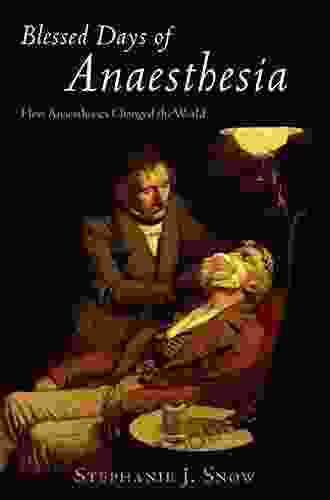
 Cason Cox
Cason CoxHow Anaesthetics Changed the World: A Medical Revolution...
Imagine a world where surgery is an...
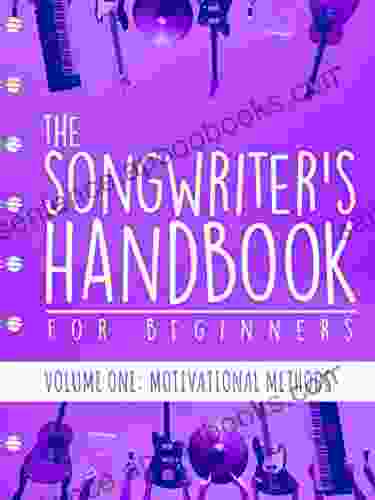
 Harold Powell
Harold PowellUnleash Your Inner Songwriter: The Ultimate Guide for...
Calling all aspiring songwriters!...
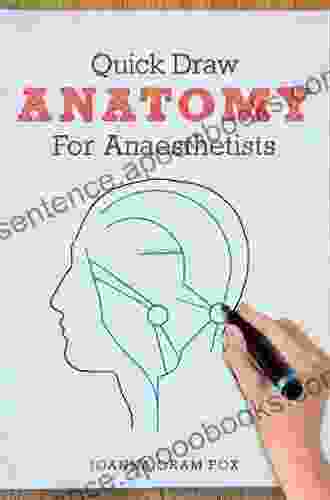
 Nikolai Gogol
Nikolai GogolUnleash Your Artistic Potential: Quick Draw Anatomy for...
In the dynamic and visually...
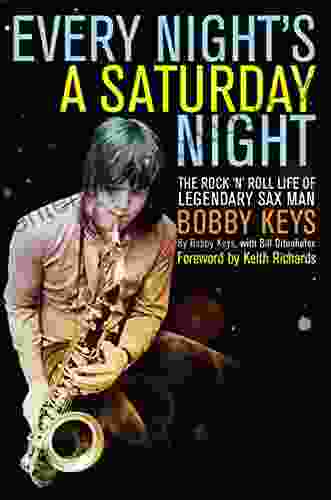
 Tim Reed
Tim ReedThe Rock 'n' Roll Life of Legendary Sax Man Bobby Keys
The Rock 'n' Roll Life...

 Damon Hayes
Damon HayesMoney Management Activities for Youth: A Guide to...
In an era marked by rapidly...
5 out of 5
| Language | : | English |
| File size | : | 1037 KB |
| Text-to-Speech | : | Enabled |
| Screen Reader | : | Supported |
| Enhanced typesetting | : | Enabled |
| Print length | : | 75 pages |
| Lending | : | Enabled |


